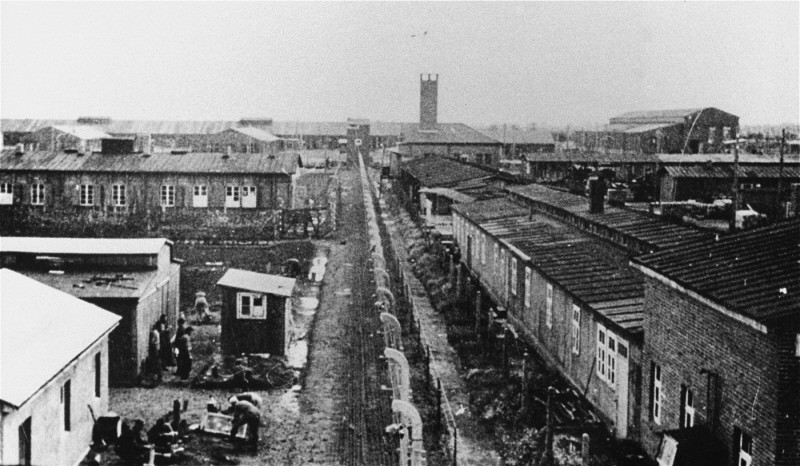
Neuengamme
Between 1933 and 1945, Nazi Germany and its allies established more than 44,000 camps and other incarceration sites (including ghettos). The perpetrators used these locations for a range of purposes, including forced labor, detention of people deemed to be "enemies of the state," and mass murder. Millions of people suffered and died or were killed. Among these sites was the Neuengamme camp and its subcamps.
The SS established Neuengamme in December 1938 as a subcamp of the Sachsenhausen concentration camp. It was located on the grounds of an abandoned brickworks on the banks of the Dove-Elbe, a tributary of the Elbe River in the Hamburg suburb Neuengamme, in northern Germany.
Investing through the SS-owned German Earth and Stone Works Corporation (Deutsche Erd- und Steinwerke), SS leaders intended to reactivate and renovate the brick works, using concentration camp laborers. On December 12-13, 1938, the SS brought about 100 prisoners from Sachsenhausen to the site to begin construction of the camp. The first prisoners were housed within the factory itself.
Prisoners in the Camp
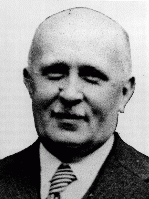
In June 1940, the SS decided to establish an independent concentration camp at Neuengamme. By this time, two further transports of prisoners from Sachsenhausen had increased the prisoner population to around 1,000. By the end of that year, approximately 3,000 prisoners were incarcerated in Neuengamme. In August 1943, the prisoner population was approximately 10,000. Until late 1940, most Neuengamme prisoners were of German nationality. After this prisoners from German-occupied territories formed the majority of those incarcerated in Neuengamme.
In all, the SS incarcerated approximately 104,000-106,000 people in Neuengamme from December 1938 until May 1945; approximately 13,500 of the prisoners were women. The largest groups by nationality were Soviets (34,350); Poles (16,900), French (11,500), Germans (9,200), Dutch (6,950), Danes (4,800), and Belgians (4,800). Initially, there were very few Jews in the camp; by 1942, they numbered between 300 and 500. In the summer and autumn of 1942, the SS removed all of the Jews, deporting those not killed in the camp to Auschwitz. In 1944, the SS transferred both Polish and Hungarian Jews to Neuengamme, many of them via Auschwitz. In all, some 13,000 Jews were prisoners in Neuengamme.
Camp Leadership
While Neuengamme was still a subcamp, SS chief Heinrich Himmler appointed SS Major Walter Eisfeld as Neuengamme's commandant. In April 1940, SS Captain Martin Weiss replaced Eisfeld. When Weiss returned to Dachau in late summer 1942, SS Lieutenant Colonel Max Pauly became commandant, a position he held until the liberation of the camp in 1945.
Conditions in the Camp
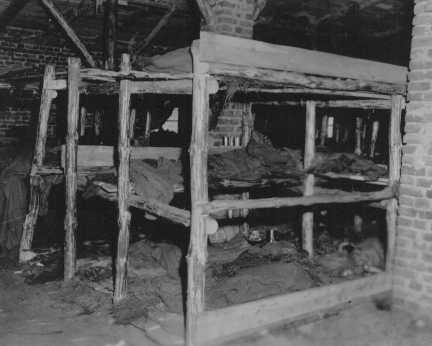
As in other concentration camps, the prisoners were given inadequate food, shelter, or medicine to maintain their health. The camp authorities deployed them at forced labor, in camp construction, in the brickworks factory, in river-regulation projects on the Elbe and on construction of a canal between the Dove and Elbe Rivers. After the Allies began bombing cities in northwestern Germany in late 1942, the SS deployed prisoners from Neuengamme to clean up rubble and to remove unexploded munitions from the streets of major cities, such as Hamburg and Bremen. On April 17, 1943, six prisoners from a labor detachment of 700 Neuengamme prisoners were killed during an Allied air raid on the city of Bremen. Prisoners were forbidden to use air raid shelters during Allied air attacks on German cities.
The conditions under which the camp authorities forced the prisoners to work and the absence of even rudimentary medical care facilitated the spread of disease, including pneumonia, tuberculosis, and typhus. More than 1,000 prisoners died in a louse-born typhus epidemic that began in December 1941.
In addition to the dreadful living conditions, the prisoners suffered beatings and arbitrary punishments. SS overseers and prisoner functionaries (the camp and block elders, and the Kapos) abused and killed prisoners according to whim in addition to the typical “official” punishments of prisoners (solitary confinement, standing at attention for hours, whipping, hanging from posts, and transfer to penal labor details).
From 1940 to 1943, the camp authorities issued prisoners the typical striped uniforms of the concentration camps. After 1943, some prisoners received civilian clothes from supplies plundered from Jews killed in German-occupied Poland and the German-occupied Soviet Union.
Initially, the camp authorities arranged for the cremation of bodies of deceased prisoners in crematoria managed by the Hamburg municipal authorities. After the spring of 1942, Neuengamme had its own crematorium. In 1942, SS authorities began systematically killing prisoners who were no longer capable of work. The camp authorities initiated this process in the spring within the framework of Operation 14f13, in which physicians appointed by German health agencies “examined” prisoners incapable of work for symptoms of mental disability and selected them for murder. The SS sent those selected at Neuengamme to the "euthanasia" killing center at Bernburg an der Saale, where German medical personnel murdered them in gas chambers. After 1942, Neuengamme medical routinely murdered prisoners too weak to work by means of lethal injection. Some 2,000 Gestapo prisoners were brought to Neuengamme between 1942 and 1945 to be killed.
Medical Experiments
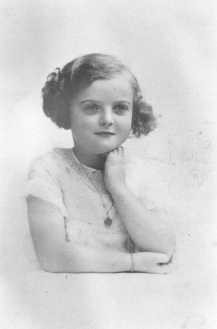
German physicians conducted medical experiments on prisoners in Neuengamme. In early 1942, scientists from the Institute for Maritime and Tropical Diseases used prisoners to test means to combat lice-borne typhus. In 1944, SS physician Kurt Heissmayer conducted experiments to develop drugs to combat tuberculosis; his subjects were 20 Jewish children transferred from Auschwitz to Neuengamme for this purpose. In April 1945, in order to hide the traces of this crime, the SS murdered these children along with their four Jewish caregivers at the Bullenhuser Damm School in Hamburg. In the winter of 1944-1945, Dr. Ludwig-Werner Haase tested a new water filter by adding 100 times the safe dose of arsenic to water. He then filtered the water using the new machine, and gave it to more than 150 prisoners over a 13-day period. The heavy doses involved in the test probably caused long-term injury to the prisoners.
Subcamps
Beginning in 1942, the SS sought to become the chief provider of labor in response to increasing demand in the German armaments industry. That year three companies built plants on the grounds of the camp. The Walther-Werke, based in Zella-Mehlis, established a manufacturing plant for small arms production that deployed around 1,000 prisoners. In April 1942, the Carl Jastram Motorenfabrik built a plant for the production of U-Boat parts, the repair of ship motors and the production of torpedo boats. At the end of 1942, the Deutsche Meß-Apparate GmBH based in Langenhorn, established a plant in Neuengamme to produce fuses for anti-aircraft grenades.
The demand for prisoner labor from both within and outside induced the camp authorities at Neuengamme to establish approximately 80 subcamps at various locations in northern and central Germany between 1942 and 1945, with more than 20 camps in Hamburg alone. In October 1942, the SS established the Drütte subcamp in Watenstedt-Salzgitter, near Brunswick. One of the first and largest subcamps of Neuengamme, Drütte provided forced laborers for the state-owned Hermann Göring Works plant that produced ammunition for anti-aircraft weapons.
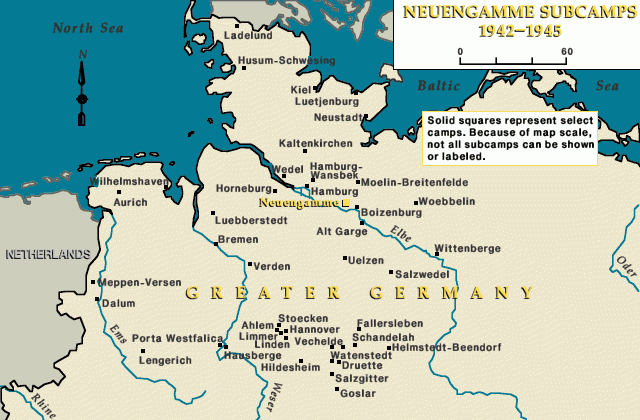
Toward the End of the War
At the end of 1944, approximately 10,000-12,000 prisoners remained incarcerated in the Neuengamme concentration camp, with another 37,000-39,000 in the subcamps. This figure included almost 10,000 women. Toward the end of the war, the death rate among prisoners in the Neuengamme system, which had been steadily climbing, reached catastrophic proportions. In the winter of 1944-1945, 1,700 prisoners died each month; in February 1945 alone, nearly 2,500 prisoners died.
As British troops approached Neuengamme, the SS evacuated some 9,000 prisoners towards Lübeck on the Baltic Sea on April 19, 1945, and murdered most of the remaining 3,000 prisoners in the camp. Some 700 almost exclusively German prisoners remained behind to destroy the internal documents of the camp. Half of them were conscripted into an SS armed unit; the remainder evacuated the camp on April 30, leaving it empty.
British forces arrived on May 4, 1945. In early May 1945, the SS loaded some 9,000-10,000 prisoners—most of them evacuated from Neuengamme and its subcamps—onto three ships anchored in the Baltic Sea off the coast of Neustadt in Schleswig-Holstein. Some 7,000 lost their lives when the British attacked two of the ships in the course of a raid on the harbor on May 3. The Thielbek, carrying about 2,000 prisoners, sank quickly. The Cap Arcona, carrying more than 4,500 prisoners, burned and capsized during the attack. Only about 600 prisoners from both ships survived.
The death register at Neuengamme indicates that about 40,000 prisoners died in the camp by April 10, 1945. Perhaps as many as 15,000 more died in the camp in the following week and during the course of the evacuation. In all, more than 50,000 prisoners, almost half of all those imprisoned in the camp during its existence, died in Neuengamme concentration camp.
Critical Thinking Questions
- How did the functions of the camp system expand after World War II began?
- To what degree was the local population aware of this camp, its purpose, and the conditions within? How would you begin to research this question?
- Where were camps located?
- Did the outside world have any knowledge about these camps? If so, what, if any, actions were taken by other governments and their officials?
- What choices do countries have to prevent, mediate, or end the mistreatment of imprisoned civilians in other nations?

